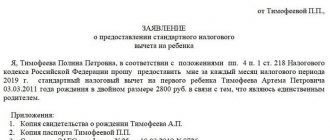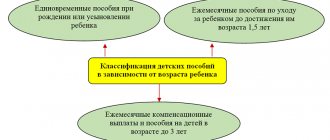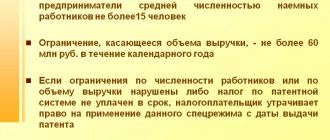Rest time (all types of breaks, weekends, vacations)
Personnel adaptation Company security HR manager tools Personnel strategy Corporate culture Personnel motivation Personnel training and development Personnel assessment Search and selection of personnel Personnel practice Practical psychology Professional classification Management technologies Labor legislation Company management. Events Production calendar Samples of documents Bookshelf Personnel publications. Help Calendar All sections have been read. Feeding break.
Applying for breaks to feed a child
In order to explain the essence of the breaks provided, it is necessary to consider specific examples.
To the seller of the clothing store A.A. Yuryeva is given the right to breaks to feed the baby for 30 minutes every 3 hours. A woman’s working day begins at 10.00 and ends at 19.00.
This issue can be resolved as follows:
- The first break will be provided from 13.00 to 13.30. This is due to the fact that three hours have passed since arriving at work.
- The second break is possible at 16.30. At 17.00 a woman must be at her workplace.
- There will be no third break. After all, according to the law, it must begin at 20.00. But since the woman works until 19.00, she will leave work at this time.
Some workers use the right to add feeding breaks to lunch breaks. They can also move this period to the beginning or end of the day. To implement this possibility, an application for breaks to feed the child is drawn up.
The paper is prepared randomly. According to the document, a woman’s working day is being reduced.
You can use the example below as a guide:
to CEO
Albino LLC
Barabanshchikov A.P.
sales consultant
A.Yu. Umnova
statement.
I ask you to provide the opportunity to add breaks for feeding the child (together) at the beginning of the working day with its subsequent reduction.
A copy of Yu.L.’s birth certificate is attached to the application. Umnova No. 324578, issued by OZAGS No. 26. Moscow 07/24/2015.
05/30/2016 _________________ /A.Yu. Umnova/
If an employee has submitted an application to postpone the break to the beginning of the workday, she can use the extra hour, starting work not at 10.00, but at 11.00.
Sample application for additional breaks for breastfeeding
How are breaks provided?
Working women with children under the age of one and a half years are entitled not only to a general lunch break, like all employees, but also an additional one - for feeding the child. Not only the child’s mother can take advantage of the benefit (including when adopting him), but also a father raising a child under the age of one and a half years without a mother, as well as a guardian (Article 264 of the Labor Code of the Russian Federation).
According to Art. 258 of the Labor Code of the Russian Federation, breaks for feeding a child:
- must be provided at least every three hours and last at least 30 minutes each. As explained by N.Z. Kovyazina, Deputy Director of the Department of Wages, Labor Safety and Social Partnership of the Ministry of Health and Social Development of Russia, breaks are provided every three hours the employee is at work. At the same time, these three hours may also include lunch time (two hours of work and one hour of lunch);
- can be attached to a break for rest and food (lunch break);
- moved to the beginning or end of the working day (work shift) with a corresponding reduction.
Note. What to feed is not important
The Labor Code does not stipulate the type of child feeding. Breaks from work for feeding are allowed for any feeding - breastfeeding, artificial feeding, and combined feeding.
Let's consider each of the options.
Duration
The duration of breaks depends on how many one-and-a-half-year-old children the employee has:
- If she has one baby , then after a three-hour period of working time, the mother can leave for 30 minutes to feed the child.
- Employees raising two or more children under the age of 1.5 years have the right to take an hour break every 3 hours.
For clarity, let's make a table with information showing how working time is reduced due to breaks:
| Working time including breaks, h | Duration of breaks during the day | Duration of work without breaks, h |
| 8 | one child - 1 hour break (twice 30 minutes each) two children or more - 2 hour break (twice 1 hour each) | 7 8 |
| 7 | one child - 1 hour break (twice 30 minutes each) two children or more - 1 hour break | 6 |
| 6 | one child – break 30 minutes two children or more – break 1 hour | 5,5 5 |
| 5 | one child – break 30 minutes two children – break 1 hour | 4,5 4 |
| 4 | one child – break 30 minutes two children – break 1 hour | 3,5 3 |
| More than three | one child – break 30 minutes | 3 |
Personal needs: going to the toilet, smoking break, coffee break
The regulations do not stipulate the employer’s obligations to provide short breaks for psychological relaxation, a cup of coffee, smoking, or visiting the toilet.
However, the methodological recommendations for determining working time standards indicate that in order to reduce fatigue, it is advisable to allow such breaks, including them during working hours.
As a rule, such breaks are allocated 10-20 minutes per shift, but their duration may vary depending on working conditions. Such breaks are established by local acts of the organization.
The most humane employers equip a special rest room where employees can relax for a while and relieve stress.
Nuances
When providing a break for feeding, it is recommended to take into account some features.
Reflection in the working time sheet
The working time sheet does not have specially established designations for the hours of feeding children (form T-2 or T-13).
Therefore, it is necessary to issue an order in which an alphabetic or numeric code will be approved, for example, “KR” or “37”. An additional line is entered in the timesheet.
If part-time work is established
Determining the number of breaks for feeding during part-time work is done according to general rules.
You just found out that a mother with a child under 1.5 years old is guaranteed breaks so that she can feed him. To exercise her right, the employee must inform the personnel department. The employer will sign the order and calculate the payment.
Attention!
- Due to frequent changes in legislation, information sometimes becomes outdated faster than we can update it on the website.
- All cases are very individual and depend on many factors. Basic information does not guarantee a solution to your specific problems.
That's why FREE expert consultants work for you around the clock!
- via the form (below), or via online chat
- Call the hotline:
- Moscow and the Region
- St. Petersburg and region
- Regions - 8 (800) 222-69-48
APPLICATIONS AND CALLS ARE ACCEPTED 24/7 and 7 days a week.
Working time and rest time
Another comment on Art. 258 Labor Code of the Russian Federation
1. ILO Convention No. 103 provides that if a woman is breastfeeding her child, she has the right to interrupt work for this purpose for one or more breaks per day, the duration of which is established by the legislation of the country.
Russian legislation establishes broader guarantees and grants the right to breaks for breastfeeding to all women who have children under the age of one and a half years and continue to work, without connecting it only with breastfeeding, therefore breaks are also provided for artificial feeding.
2. Breaks for feeding a child are provided if a woman does not use maternity leave. If another family member who is actually caring for the child is on leave, this does not deprive the mother of the right to a break.
3. Breaks for feeding the child are provided to both mothers and guardians and adoptive mothers. A father or guardian raising a child without a mother also has the right to a break (see Article 264 of the Labor Code of the Russian Federation and the commentary thereto).
4. As a general rule, breaks for feeding a child are provided at least every three hours of work, lasting at least 30 minutes, and if there are two or more children under the age of one and a half years - one hour each.
When drawing up a work schedule taking into account breaks, it is necessary to take into account that the purpose of these breaks is to ensure the most favorable diet for the child. Therefore, the first break may not be provided three hours after the start of the work shift, but earlier, based on the time of the previous feeding.
To my father
A break is provided to the father if he is raising a child without a mother. Adoptive parents and guardians of children also have the right to take advantage of this guarantee.
For military personnel
The Labor Code does not apply to military personnel. They are subject to legislation on the status of military personnel (Federal Law No. 76-FZ of May 27, 1998) and a presidential decree on military service (Presidential Decree No. 1237).
Based on the provisions of paragraph 9 of Article 10 of Federal Law No. 76, military personnel can enjoy guarantees and compensation from regulations on labor protection, motherhood and childhood. Hence, they are given special intervals to feed their children.
Right or obligation of the employer?
The Labor Code establishes the employer’s obligation to arrange additional breaks for an employee who has a child under 1.5 years old. However, it does not directly say that you need to write a statement.
It should be noted that this guarantee does not apply to mothers raising children under 3 years of age.
To implement this guarantee, the employer must be aware that the mother has such a right. In order to maintain the average salary for the employee and take into account the break during working hours, an order will be required.
Is the lunch break included in working hours? Details are in our article. Is certification carried out for an employee on maternity leave? Find out here.
Break payment
The Labor Code of the Russian Federation states that payment for the periods of time in question must be made without fail. The amount paid to the employee is determined in accordance with the average salary of the employee, calculated in the usual way .
It is also worth noting that the child care allowance while the mother is working continues to be paid in the appropriate amount.
Labor Code
Important
In addition, the organization at the time a woman applies for a break may not have a local regulation on providing breaks for feeding a child. Due to this or other reasons, the employer may not actually provide a break. Therefore, a written request for breaks must be submitted.
In addition, in accordance with Part 3 of Art.
How often are feeding breaks provided?
Dec How often are women given a break to breastfeed a child up to 15 years old? The employee’s salary is 16,600 rubles. For work during a full calendar month and subject to the fulfillment of the plan, he is awarded a bonus in the amount of 5,400 rubles.
The employee did not take parental leave and did not apply for part-time working hours. It is necessary to calculate the salary of E.I. Lososev for June 2010, if it is known that he worked 21 working days.
The amount of payments taken into account for calculating average earnings for the period from June 1, 2009 to May 31, 2010 amounted to 252,000 rubles, 237 working days were worked during the same period. Solution Let's calculate the amount of average earnings saved during breaks to feed the child.
1.1. First, we determine the number of days to be paid.
Concept
Dear readers! The article talks about typical ways to resolve legal issues, but each case is individual. If you want to find out how to solve your particular problem , contact a consultant:
+7 (499) 110-43-85 (Moscow)
+7 (812) 317-60-09 (Saint Petersburg)
8 (800) 222-69-48 (Regions)
APPLICATIONS AND CALLS ARE ACCEPTED 24/7 and 7 days a week.
It's fast and FREE !
A lactation break is a period given to working women for the purpose of feeding a child. It is added to working hours and is paid.
Full and short day
Based on the Resolution of the Supreme Court of the Russian Federation, women nursing children have the same number of working hours as other employees. At the same time, the Labor Code provides for their start automatically.
It is worth noting that the norm is assumed not only for one child. If there are two or more children, then the break should be doubled.
When working full time away from home, the employee may not be able to come home and make full use of the allocated time. In this regard, the Labor Code provides for the possibility of combining feeding breaks with lunch time. Also, a woman may leave work earlier or later taking into account this period.
With a 40-hour work week and the working day starting at 8.00, the first break is provided at 11.00, and the second at 15.00. This does not take into account lunch breaks. If you combine them with lunch, a woman can leave an hour earlier or arrive an hour later.
When taking a break, additional agreements to the main employment contract are not provided. It is only important to draw up a statement if the break makes adjustments to the work process.
Based on Article 256 of the Labor Code of the Russian Federation, a woman raising a child under one and a half years of age has the right to part-time work. In this case (in accordance with Article 93), an agreement is concluded between the employer and the employee. At the same time, you can’t go to work every day. In addition, the contract may provide for a reduction in working hours.
To determine the possibility of feeding breaks, similar standards are used. If the working day lasts five hours and work starts at 9.00, the first break is given at 12.00.
Normative base
The Labor Code of the Russian Federation (Part Four, Section 12, Chapter 41) contains an article reflecting benefits for women with infants. The norms are reflected in Article 258.
Working mothers supporting children under 1.5 years of age have the right to an additional lunch break to feed the baby. It is provided at least every three hours. The break lasts for half an hour. If there are two or more children, then the woman is given an hour break.
If a woman expresses her desire, the feeding break can be combined with the main lunch. They can also be moved together to the beginning and end of the working day. Then the shift or workday is reduced for a certain time.
Breaks must be counted by the employer as working time. They are paid in accordance with the average salary of the employee.
Pregnancy and childbirth
In accordance with Article 254 of the Labor Code of the Russian Federation, the administration is obliged to transfer a pregnant woman, at her request, to an easier job than her previous one, or to reduce her production rate. The basis for the transfer is a medical certificate and an application from the employee. After which the employee retains the average salary at her previous place of work. If the documents are presented, she may not go to work until she is provided with easier working conditions than before. The organization pays for missed days based on average earnings. By the way, women who have children under the age of one and a half years also have the right to demand easier work. After the transfer, the average earnings are maintained until the child turns one and a half years old.
Maternity leave with payment of state social insurance benefits in the amount established by law at the expense of the social insurance fund is provided to women upon their application and in accordance with a medical report (Article 255 of the Labor Code of the Russian Federation). According to the federal law of May 19, 1995 No. 81-FZ “On state benefits for citizens with children” (as amended and supplemented), maternity benefits are established at the place of work for employees who are subject to state social insurance in the amount of average earnings (income ). However, Federal Law No. 25-FZ of February 8, 2003 “On the budget of the Social Insurance Fund of the Russian Federation” limits the amount of this benefit - no more than 11,700 rubles per month. The payment procedure is specified in the Regulations on the procedure for providing benefits for state social insurance, approved by Resolution of the Presidium of the All-Union Central Council of Trade Unions dated November 12, 1984 No. 13–6, and in the letter of the Social Insurance Fund of the Russian Federation dated February 18, 2002 No. 02–18/05/1136. These documents state that maternity benefits are assigned and paid for working days missed during maternity leave, and are calculated by multiplying the daily benefit by the number of specified days. And the daily allowance is based on the average daily earnings: the amount of earnings is divided by the number of all working days of the month (according to the schedule) falling on maternity leave.
The duration of maternity leave is 140 calendar days (70 days before childbirth and 70 days after), in the case of multiple pregnancy - 194 calendar days (84 days before childbirth and 110 days after). A woman can be on maternity leave until the child turns three years old (Article 256 of the Labor Code of the Russian Federation). Moreover, while on vacation, she can work from home or go to work part-time. And regardless of whether she works or not, she will receive benefits from the funds of the Russian Social Insurance Fund.
Calculation and payment of average earnings
To determine the amount of remuneration for a worker who uses feeding breaks, it is necessary to carry out some calculations.
First, it is important to determine your average daily earnings. The periods during which a woman feeds her baby are paid according to the average value. At the same time, the legislative calculation is reflected in Article 139 of the Labor Code of the Russian Federation.
To carry out the calculation, it is important to know the woman’s income for the working year preceding the month when the woman was given the opportunity to take breaks.
The following should be excluded from this period:
- time spent on sick leave;
- leave granted without pay;
- days off set aside for caring for a disabled child;
- downtime due to the fault of the institution.
Most often, women receive the right to breastfeeding when returning from maternity leave. Then you need to focus on paragraph 5 of the Regulations on average wages. Based on it, the calculation is made based on the period before maternity leave.
To clarify the point, consider the following example. The calculation is based on the period from January 2020 to January 2020. At this time, the woman’s earnings amounted to 190,000 rubles.
To carry out the calculation, the formula is used:
Sz (1d) = Salary (year) / 12 / 29.3
In it:
When calculated, the amount equal to 511 rubles 95 kopecks is obtained.
Next, the average earnings attributable to feeding breaks are calculated. With an eight-hour working day, you get two breaks of 30 minutes each. Thus, an hour is 1/8 of the total working time or 0.125.
It is necessary to calculate the average earnings during the break. To do this, you need to multiply the average daily earnings by the share allocated for feeding. The resulting value is 63 rubles 99 kopecks. This amount is credited to the mother per day for breaks.
It is important to comply with labor laws when providing breaks and making payments. If you do not do this, then the employer can be brought to administrative liability on the basis of Article 5.27 of the Code of Administrative Offenses of the Russian Federation.










